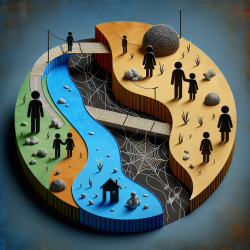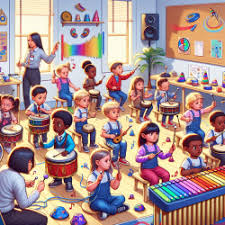Understanding the Impact of Family Conflict on Child Mental Health
As Special Education Directors, we are constantly seeking ways to enhance the support we provide to our students. The recent research article titled Race, Family Conflict and Suicidal Thoughts and Behaviors among 9–10-Year-Old American Children sheds light on the significant role that family conflict plays in the mental health of children, with a particular focus on racial disparities. This study offers valuable insights that can guide us in tailoring our approaches to support diverse student populations effectively.
Key Findings of the Research
The study, conducted using data from the Adolescent Brain Cognitive Development (ABCD) study, highlights a crucial finding: family conflict is a significant risk factor for suicidal thoughts and behaviors (STBs) in children aged 9 to 10. However, this association is more pronounced in Black children compared to White children. This suggests that Black children experiencing family conflict are at a higher risk of STBs than their White counterparts.
The research emphasizes that while family conflict affects all children, its impact is more severe for Black children due to the additional social stressors they face. This aligns with the broader literature on the heightened vulnerability of Black individuals to social determinants of mental health.
Implications for Practitioners
For practitioners working in educational settings, these findings underscore the importance of adopting a nuanced approach to supporting students from diverse backgrounds. Here are some strategies to consider:
- Enhanced Screening: Implement more rigorous screening processes for family conflict among Black students to identify those at higher risk for STBs.
- Culturally Sensitive Interventions: Develop interventions that are culturally sensitive and address the unique stressors faced by Black children.
- Family Engagement: Engage families in conversations about the impact of conflict on children's mental health and provide resources to help reduce conflict.
- Professional Development: Encourage ongoing professional development for educators and staff to better understand racial disparities in mental health and effective intervention strategies.
Encouraging Further Research
While this study provides valuable insights, it also highlights the need for further research. Understanding the mechanisms through which family conflict impacts different racial groups can lead to more effective interventions. Practitioners are encouraged to collaborate with researchers to explore these dynamics further and contribute to the development of evidence-based practices.
Conclusion
The findings from this study offer a powerful reminder of the critical role that family dynamics play in the mental health of children. By acknowledging and addressing the racial disparities in the impact of family conflict, we can work towards creating a more equitable and supportive environment for all students.
To read the original research paper, please follow this link: Race, Family Conflict and Suicidal Thoughts and Behaviors among 9–10-Year-Old American Children.










